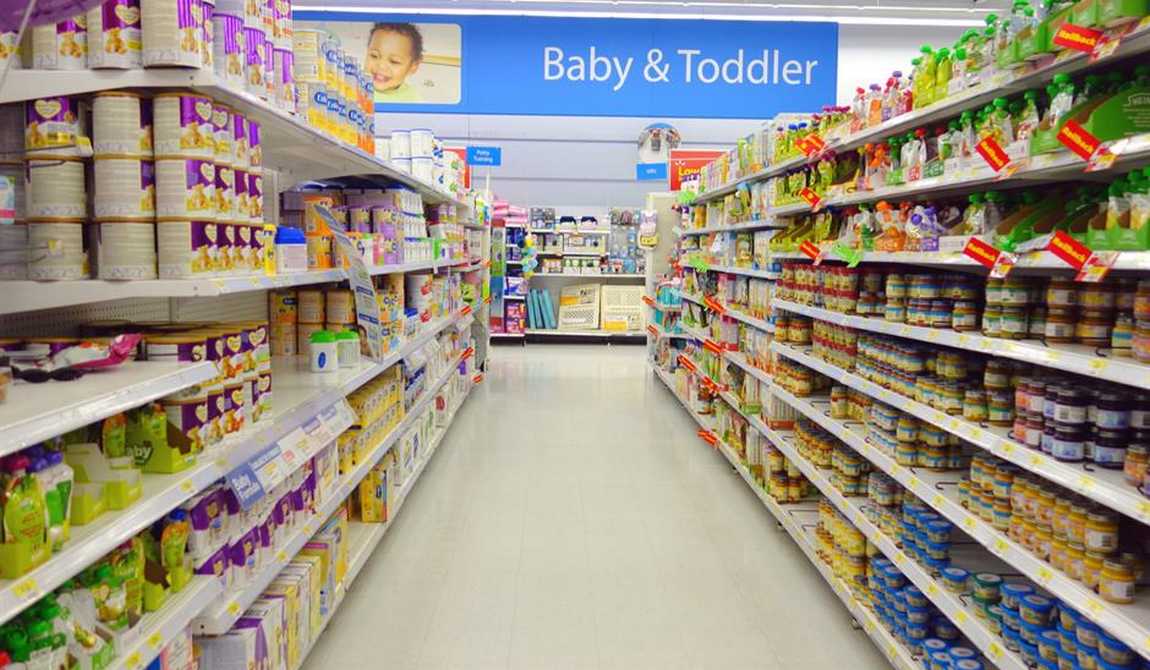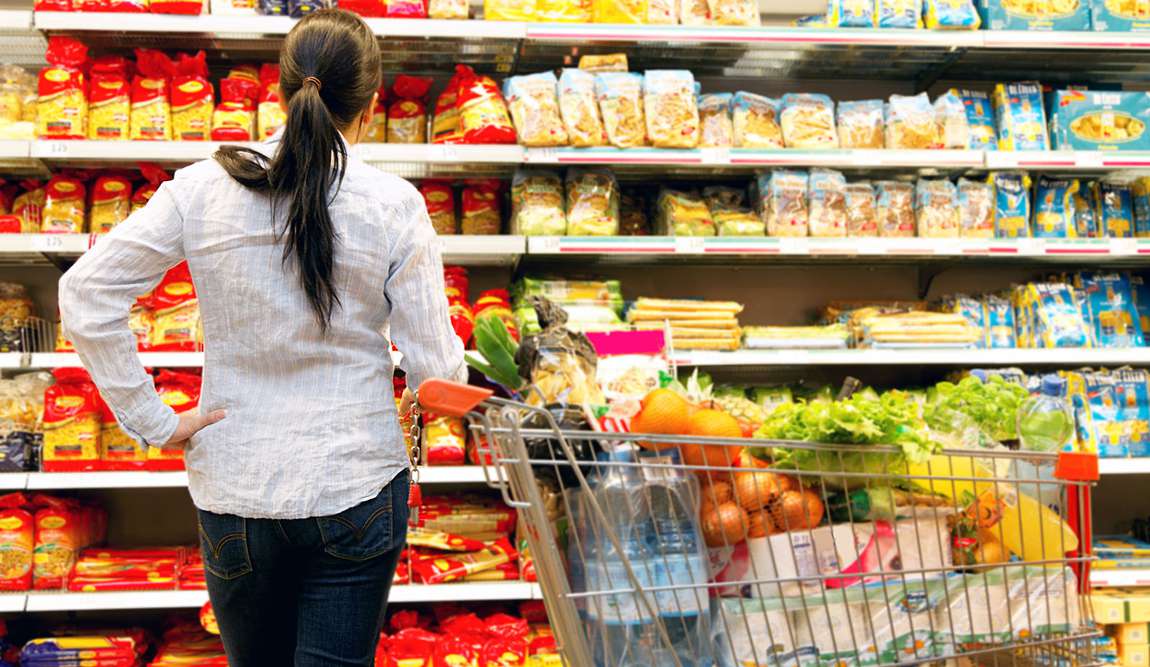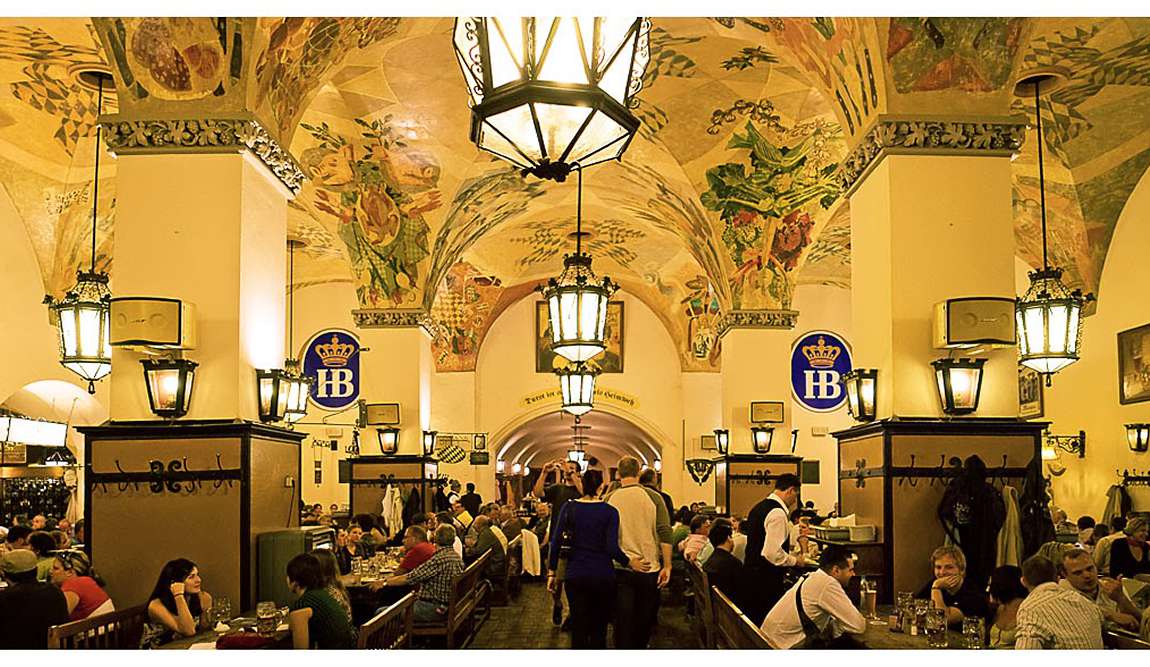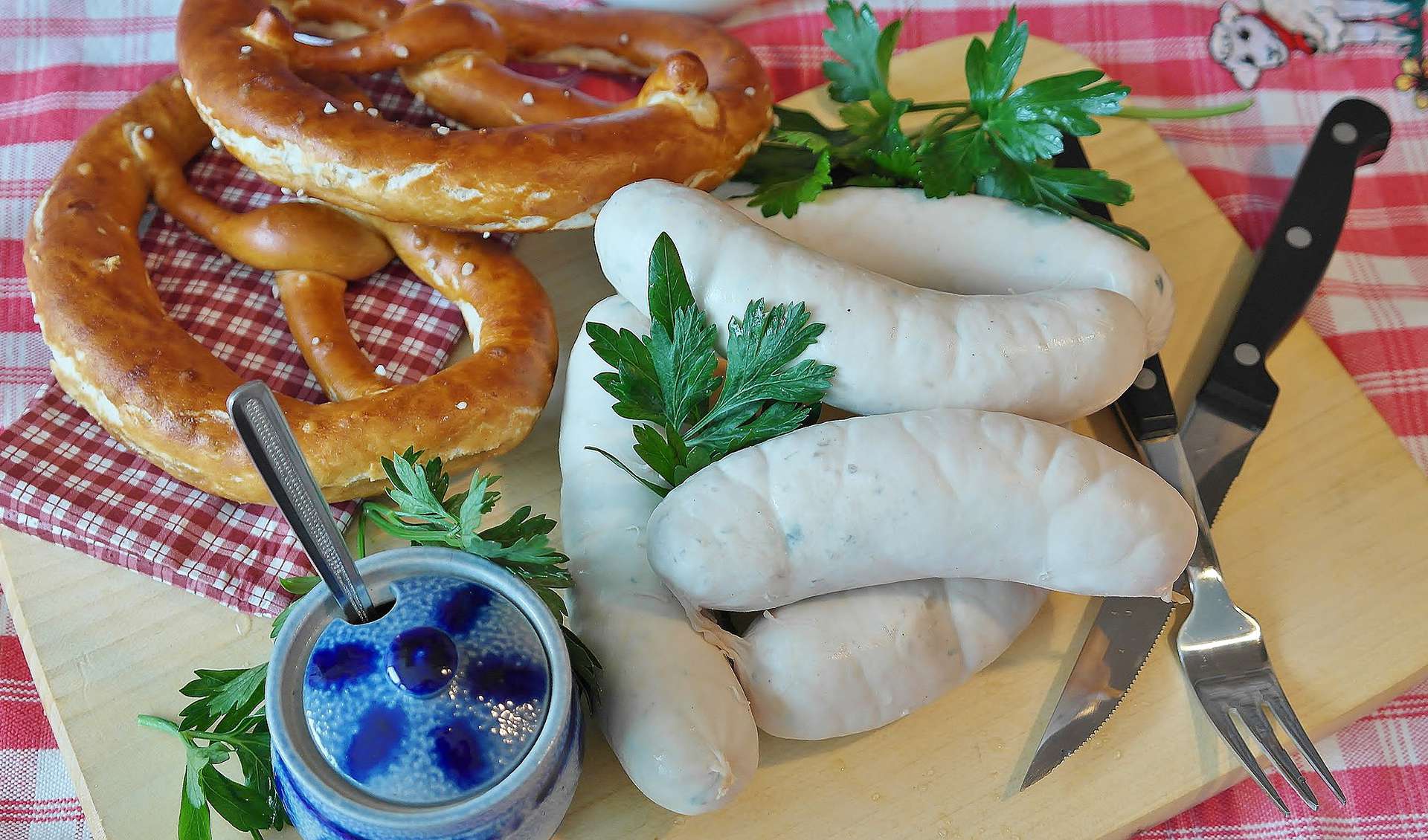Germany is regarded as one of Europe's most prosperous and forward-looking countries, with a high standard of living and a stable economy. It attracts thousands of tourists every year with its colourful festivals, exciting sights and ancient architecture. The region is also famous worldwide for its quality cars and beers, of which there are hundreds.
In this article, we look at one of the country's main attractions — its national cuisine — and tell you what to eat in Germany and the food prices. How expensive is food in Germany? What are the grocery prices in German supermarkets? Let's find out!

What is Germany's most popular food?
The region's culinary traditions have been greatly influenced by its closest neighbours: Austria, Italy and France. Many of the recipes are very similar, but traditional food in Germany has its characteristics. The most popular dishes are made of pork, beef, poultry, eggs, cabbage and potatoes.
Each region is renowned for its recipes. For example, Bavaria is famous for sausages with sweet mustard, stewed cabbage and dumplings. Franconia is known for its delicious pasta dishes. The Rhineland region traditionally serves marinated beef and potato salad. Cologne is famous for its almond biscuits.
Plenty of seafood dishes are served in seaside towns and cities like Hamburg. They're hearty, flavorful and delicious, so it's easy to forget about calorie counting and dieting.
The national food in Germany is thought to be meat sausages, stewed cabbage and beer. But in reality, the culinary traditions are much richer and more varied.
When travelling here on holiday, every tourist wants to know what to try in Germany. Sausages are undoubtedly at the top of the list. It is said that there are more than a thousand varieties. And here are some of the other most famous dishes this region is renowned for, starting with the first course:
- Kartoffelsuppe is a classic German potato soup with Vienna sausages, bacon, and plenty of vegetables
- Biersuppe – beer is the main ingredient of this traditional German soup that has been widely enjoyed in medieval and early modern Europe. It is typically made by combining light or dark beer with various other ingredients such as meat broth, water, flour, egg yolks, milk, cream, butter, and stale bread, and then simmering the mixture until it develops a thick and creamy consistency.
- Käsesuppe – a delicious dish of minced meat, mushrooms, potatoes and melted cheese.
Let's move on to salads and second courses:
- Kartoffelsalat – it is the most popular national dish; all cafés and restaurants in Germany offer it on their menus. It is made with boiled potatoes and spices;
- Eisbein — lit. The "ice leg" is a pork knuckle marinated with beer and spices and then baked in the oven. Traditionally served with dumplings or potato salad;
- Weisswurst – is a traditional Bavarian sausage made from minced veal and pork back bacon.
- Bratwurst – is a specific type of fresh link sausage made of pork. Beef and veal are usually incorporated into a blend, often including pork.
- Sauerbraten – is a tender beef roast that has marinated for several days prior to cooking.
- Käsespätzle – egg noodles with cheese and fried onions.
And now for dessert:
- Schwarzwäldertorte – a lovely layered cherry cake with chocolate;
- Rote Grutze – a red berry dessert that resembles jam or kissel. Serve with ice cream or whipped cream;
- Bienenstich – a trendy cake made of yeast dough with a significant layer of cream and topped with a honey crust and almonds.

It's worth saying a few words about some German snacks:
- Currywurst – sausages (typically pork sausages, the famous bratwurst) steamed and then fried, cut into small pieces and seasoned with curry ketchup, served with french fries.
- Pretzel – a beer snack, a type of baked pastry made from dough that is commonly shaped into a knot.
- Bismarck baguette – herring in a bun. It looks like a hamburger, only instead of a cutlet, there are bits of herring inside;
- Steckerlfisch – grilled fish.
Baby food in Germany
When travelling with children, you should, of course, know how to cater for them. The easiest way is to rent an apartment with a kitchen and cook yourself from food bought in supermarkets.

This will save you a considerable amount of money. There is a wide range of high-quality goods to choose from. As in all countries worldwide, prices in large cities and major tourist centres will be higher than in the periphery. In any supermarket or pharmacy, you can easily find milk formula and baby food from the world's top brands: Aptamil, Hipp, Bebivita, Milupa, Humana, Beba, and Alete.
But dairy products such as curds or kefir, made especially for children, are less popular. If your baby is used to them, arrange a stock before you travel or find out in advance which shops sell them.
We do not recommend buying curds with additives; instead, get natural curds and add fruit, berries and mashed potatoes.
Experienced tourists say that babies can be given plain adult yoghurts without fear because the European quality of the products guarantees that even the youngest gourmets have no digestive problems. For older children, there is a large selection of different fruit yoghurts and soft cheeses.
It shouldn't be difficult to organise meals for your children in cafés and restaurants, even though the food in Germany is quite greasy and spicy if they are already eating at a communal table.
Pay attention to the special kid's and diet menus. They usually include soups, which they know how to make unusually. The first course might be a broth with noodles and potatoes served with meat dumplings. Another option is the vegetable cream soup with courgette or cauliflower. You can have mashed potatoes with kotelette or meatballs for the main course.
Young travellers will love the sausages that are in abundance in every German town. You can eat at McDonald's, but the prices are high. For example, a meal for one person will cost 10-15 Euros.
German cafés have vast pastries and desserts for the little sweet tooth. They will love Schwarzwäldertorte, macaroons, Berliner doughnuts or Rote Grütze. If your children are wary of anything new, you can offer them pfannkuchen, served with jam.
Children's menus in hotels usually include fried or boiled potatoes, muesli, schnitzel, fish, egg dishes and drinks. Some hotels may prepare vegetables or stews for the children's table.
The cost of food
Compared with other countries, food prices in Germany are slightly higher than the European average. Edeka, Kaufland, Lidl, Penny, Netto and Aldi are the most popular supermarkets.
Aldi, Lidl, Penny and Netto supermarkets have the lowest prices. Organic food lovers are offered products under the Bio brand. Alnatura specialises in organic food and sells food grown without chemical fertilisers. Prices here are usually 2-3 times higher than in regular shops.

One feature in German supermarkets is that shopping trolleys are bailed out for €0.5-1. This is done so that they are returned to their place. Once the purchased goods have been unloaded, the trolley must be returned and your money collected.
Unusual for our travellers is also the fact that small shops are open until 5 pm. Supermarkets in Germany may be open till 9.00 p.m. to 10.00 p.m. For most shops, it is Sunday off.
This is because buying supplies for the whole week on Saturdays is customary. Some shops, called Spätshop, are open 24 hours a day, seven days a week.
Food prices 2025
As mentioned above, the standard of living of Germans is relatively high, so the prices are appropriate. Consider the average cost of groceries in Germany:
- Bread made from wholemeal flour – €1,89;
- Toast bread (750 g) – €1,69;
- Eggs (10 pcs) – €2,89;
- Milk (1 l) – min. €1,25;
- Gouda cheese (150 g) – min. €1,89;
- Pasta (1 kg) – €2,78;
- Yoghurt Natur (1 l) – €2,78;
- Forelle (1 kg) – €16,5;
- Salmon (200 g) – €9,5;
- Beef tenderloin (1 kg) – €20;
- Chicken fillet (1 kg) – €12,45;
- Sausages (1 kg) – €9,32;
- Sunflower oil (1 l) – €2,69;
- Chocolate (100 g) – min. €1,15;
- Jacobs instant coffee (200 g) – €9,49;
- Rice (1 kg) – €2,99;
- Oat flakes (1 kg) – €1,98;
- Cauliflower (1 pcs) – €2,49;
- Potato (1 kg) – €1,15;
- Cucumber (1 pcs) – €1,29;
- Onion (1 kg) – €2,8;
- Apples (1 kg) – €2,49;
- Grape (1 kg) – €2,59;
- Pepper (1 kg) – €2,79;
- Tomato (1 kg) – €1,69;
- Bananas (1 kg) – €1,19;
- Lemon (1 pcs) – €0,89;
- Tea (25 pcs) – min. €2,19;
- Beer (1 l) – min.€1;
- Wine (1 l) – min. €2,99;
- Water (1,5 l) – min. €0,85.
Food products nearing the end of their shelf life are marked with orange or yellow price tags. They usually say Akce or Billiger on them. They are typically sold at excellent discounts. However, many customers refuse to buy expired products despite good deals.
They reason as follows: Why buy if fresh, freshly brought goods are already on the shelves? For this reason, some supermarket owners have decided to give away these products to people experiencing poverty.
On certain days, a car arrives to pick up the goods that have reached the end of their shelf life or have damaged or ruined packaging and take them to the Tafel. It is a place where free food is distributed to all those in need.
There are about a thousand such distribution points throughout Germany. In some of the Tafels, you have to pay an entrance fee of 1-2 euros and be sure to show a certificate from the social office, which confirms the status of a poor person.
For such a purely symbolic amount, you can get a whole bag of food for free. As you can see, food prices in Germany can be very different for different population segments.
Prices in cafes and restaurants 2025
If you want to grab a bite and take a break from the excursions but don't want to spend too much time on it, check out the local fast food. Street food in Germany consists of sausages, frankfurters and hamburgers that are sold at every corner. A snack on the street with sausages or grilled chicken wings costs around €6-8. Ice cream costs about €3-4. The price is about the same at fast-food cafés.
If you decide to visit a café, it's best to go with the locals, as they can be 2 to 3 times cheaper than the tourist hotspots. The lowest prices in cafes can be found in restaurants on the outskirts of towns and cities.
At a local café, you can pay around €15 for a meal consisting of a side dish, meat dish, salad and a drink. The size of portions compensates for the relatively high price — they are very big, so enterprising tourists usually take one portion for two. You'll have to pay about €20-25 for the same set in popular tourist places.

The average restaurant bill for a complete meal is around €35-40 per person. But there are restaurants where the bill will be in triple digits. In restaurants and cafés in Germany, it is customary to leave a tip, which is usually 5% of the amount ordered.
It is worth noting that the country has long had a law banning smoking in public places. So you can go to any café or restaurant with your children without fearing their health.
To experience the country's atmosphere, you should visit at least one of Germany's family-run restaurants. These homely restaurants offer exceptional service, traditional homemade dishes, and a homely atmosphere. Because they tend to be popular with locals and tourists alike, it is best to book well in advance so you don't have to wait too long for a table.
Children's cafes are also trendy in Germany, with special menus and play areas where the naughty little ones can run around and have fun while the chefs cook for them. For example, in Berlin, check out:
- Kinder KOCHSPASS (Binger Str. 9, 14197 Berlin (Charlottenburg-Wilmersdorf);
- Mini Me Kindercafé (Damaschkerstrasse 4, 10711 Berlin (Charlottenburg-Wilmersdorf);
- KINDERCAFE Wunderland (Düsseldorfer Strasse 40, 10713 Berlin (Charlottenburg-Wilmersdorf);
- Charlottchen (Droysenstrasse 1, 10629 Berlin (Charlottenburg-Wilmersdorf).
In Munich, look out for the following children's and family cafés and restaurants:
- Kindercafe Zuckertag (Isartalstraße 18, 80469 München);
- Café Glückskind in Haidhausen (Seeriederstraße 9, 81675 München);
- Tassilo da Sebastiano (Balanstraße 34, 81669 München).
Kidpassage wishes you a pleasant holiday and bright and tasty experiences. We would be delighted if our article has helped you plan your trip to this beautiful land and understand how much groceries cost in Germany. And if you're planning your next trip to Munich, find out what children's and family activities await you there.






